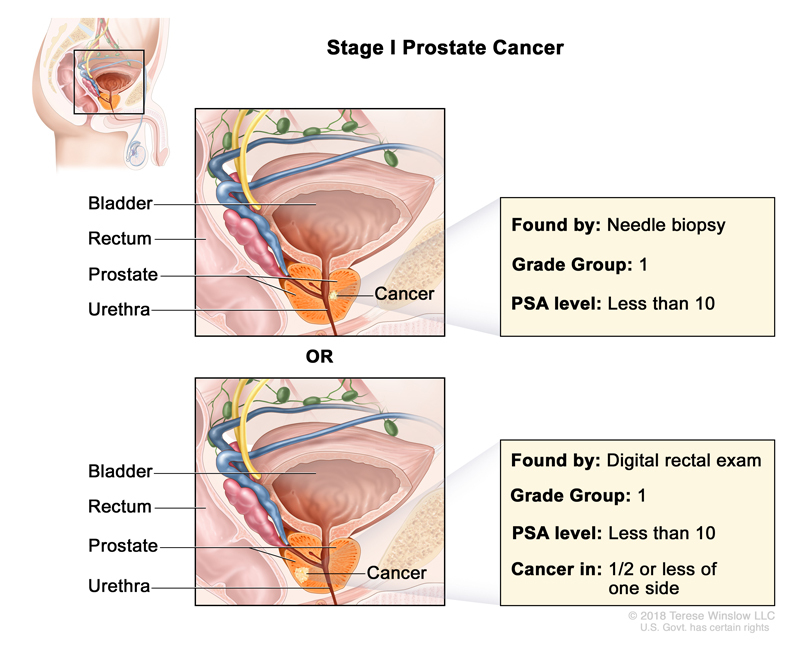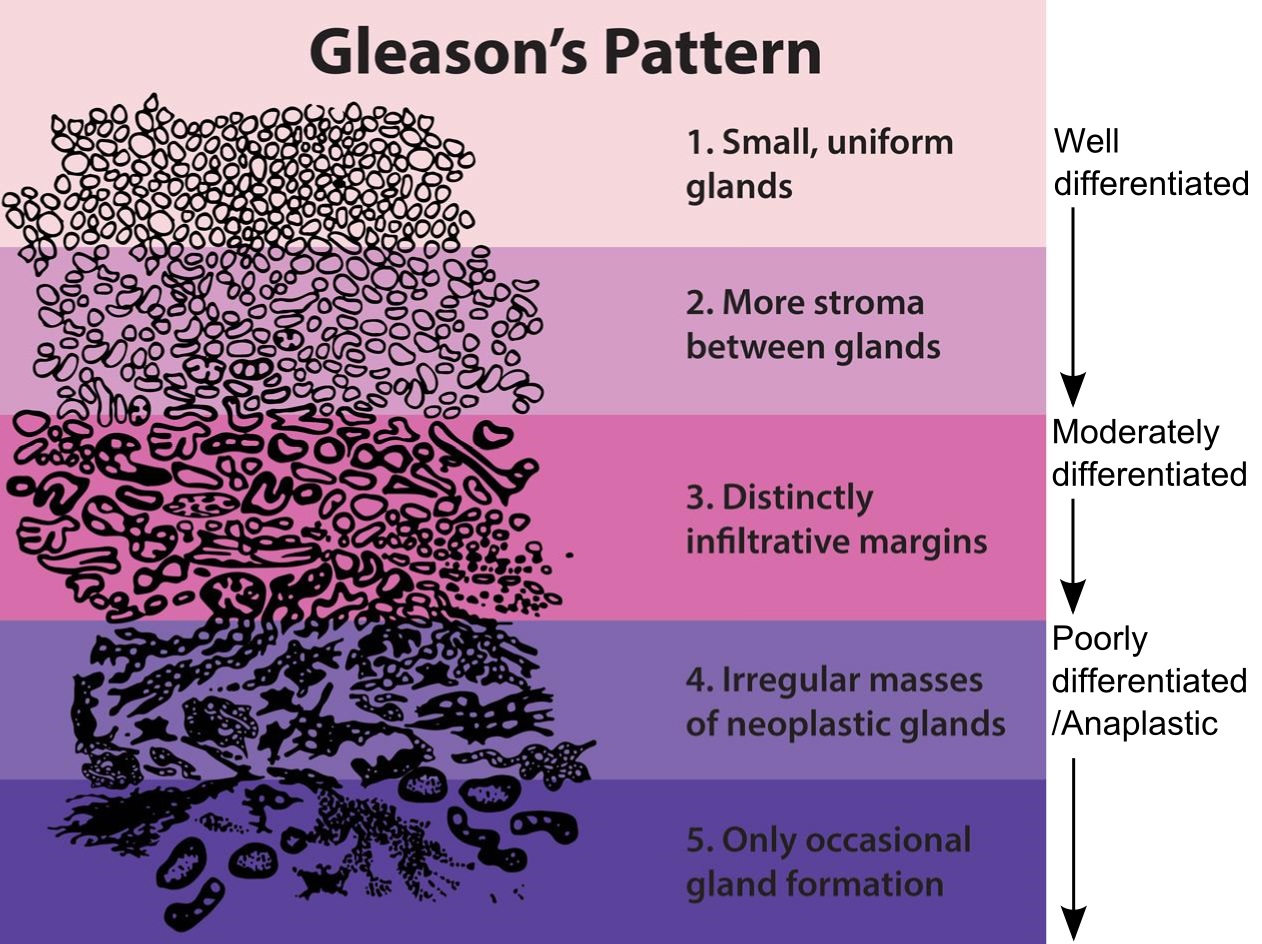- Stage 1 Prostate Cancer
- Gleason Score & PSA Test Explained
Overview
A Stage 1 Prostate Cancer diagnosis means that the tumor has spread to only one half of one side of the prostate gland or less, as shown in yellow on the bottom image. It has not spread to nearby lymph nodes or any other organ in your body.
What Tests Will I Need and Why?
Blood and Imaging tests are done to understand your general health, confirm your diagnosis and determine your cancer stage.
Tissue analysis is done to identify the cancer cell type and the Gleason Score, which is critical to finding the best treatment option for you.
A Stage 1 diagnosis means that tissue analysis resulted in a Gleason Score of 6 or less on a scale of 1 to 10.
In addition to a Gleason Score, your doctors will analyze the tissue for your Prostate–Specific Antigen density also referred to as PSA density. A high PSA density predicts if your PSA elevation is due to cancer or other prostate problems. In Stage 1, your PSA level has been found to be less than 10.
You may also require special Saliva or Blood Analysis to look for specific mutations (actual changes in your body’s DNA), called BRCA1 and BRCA2.
Re-read this summary as needed and then tap, “Compare My Treatment Options Now“. Our unique Comparison Page will help you understand your FDA-approved treatment options including, who can help you pay for your treatment, where and how each is given and what side-effects you may experience.

Cancer Research U.K. CC BY-SA 4
Gleason Score & PSA Density Explained
A Prostate Cancer diagnosis is based upon the results of staging and two tests requested by your Dr., the Gleason Score and the prostate-specific antigen (PSA).
Gleason Score
Tissue samples removed during a biopsy are used to find out your Gleason Score, a test that describes how aggressive a prostate tumor is. A Gleason Score will range between 2 and 10.
It is made up of 2 grades that range from 1 to 5. A low grade of 1 means that the cells in the tumor look very much like healthy prostate cells. Cells that look completely different to normal cells are assigned a higher score, usually 4 or 5.
- The first grade is given to describe the cells in the largest area of the tumor
- The second grade is given to describe the cells in the second largest area of the tumor.
When these two grades are added together, they give us a Gleason Score between 2 and 10. For example, 3+4 = Gleason Score 7.
PSA Density
Your Dr. also measures PSA Density to help determine the aggressiveness of the prostate cancer. PSA Density is the PSA level, divided by the volume of the prostate gland as measured by ultrasound or MRI.
A high PSA density predicts whether a PSA elevation is due to cancer or other prostate problems.

Cancer Research U.K. CC BY-SA 4
Recommended Prostate Cancer Videos

Prostate Cancer
An Overview

Understanding Localized Prostate Cancer
An Overview

Prostate Cancer In The Black Community
Brought To You By Black Health Matters

A Diagnosis and Treatment: Localized Prostate Cancer
A Conversation with Dr. John Lynch

Exercise & Prostate Cancer
From Your Friends @ the Oncology Nursing Society

How Cancer Spreads
Metastatic = Advanced
Commonly Searched Questions
Early Stage 1 Prostate Cancer Survival Rate
Source: Cancer.gov
Early Stage 1 Prostate Cancer Treatment
Source: Effectivehealthcare.ahrq.gov
Early Stage 1 Prostate Cancer Definition
Source: Cancer.ca
Early Stage 1 Prostate Cancer Symptoms
Source: Effectivehealthcare.ahrq.gov
Early Stage 1 Prostate Cancer Recurrence Rate
Source: PubMed.gov
Early Stage 1 Prostate Cancer Prevention
- Healthy Diet: Focus on a diet rich in fruits, vegetables, and whole grains, and limit intake of high-fat foods, particularly those from animal sources.
- Maintain a Healthy Weight: Achieve and maintain a healthy weight through regular physical activity and a balanced diet.
- Avoid Smoking: Do not smoke and avoid exposure to tobacco smoke.
- Limit Alcohol Intake: Consume alcohol in moderation or avoid it altogether.
- Regular Check-ups: For those at higher risk, such as those with a family history of prostate cancer, discuss with your healthcare provider the potential benefits of early screening and PSA tests.
Source: PubMed.gov














